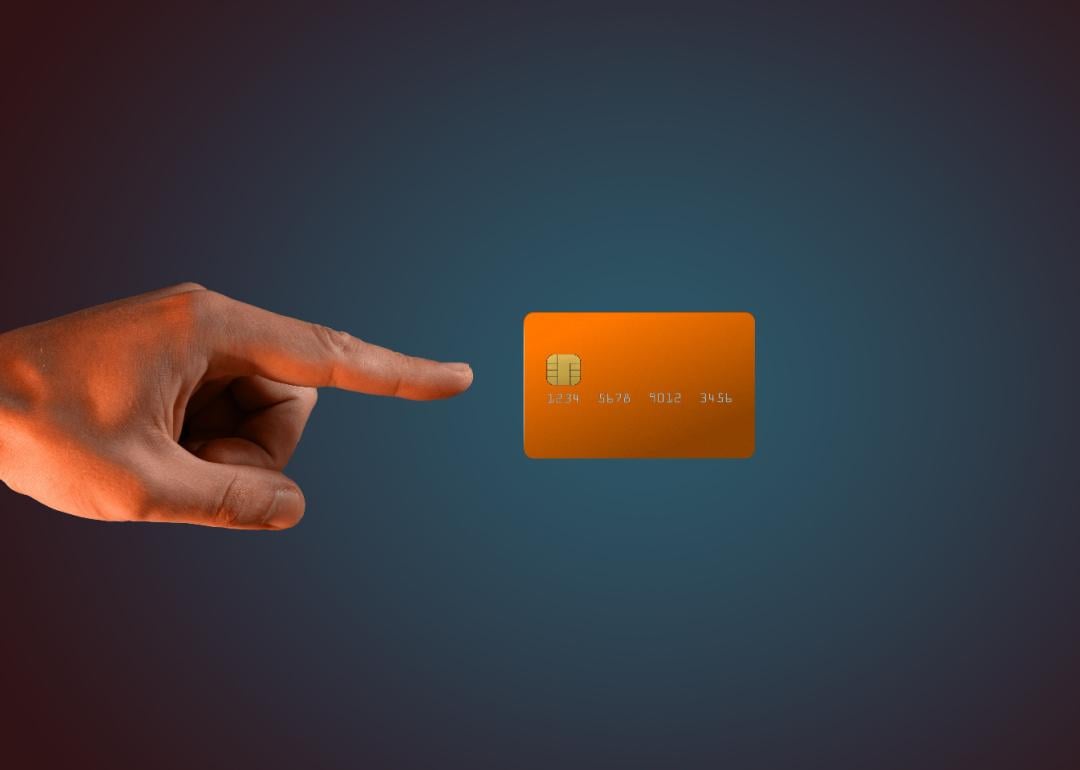
What to look for in a cashback business card
What to look for in a cashback business card
A business card with cashback helps you earn money back on every dollar your company spends. It returns a percentage of your purchases as cash, which you can apply toward your balance or use to reinvest in your operations. Unlike other reward types, like travel or points-based cards, cashback cards offer direct savings that are easy to track and use.
If you're comparing options, it’s not just about the cashback rate. You’ll want to consider spending categories, annual fees, limits, and how rewards are redeemed. Some cards offer flat-rate cashback on all business purchases. Others give you higher returns in specific categories like travel, gas, or software subscriptions. Ramp explains how cashback cards can affect your business, and highlights the factors to consider when choosing a card.
Understanding the impact of cashback on your business
Cashback rewards effectively function as an automatic discount on your operating expenses, directly improving your bottom line without requiring changes to your business operations or spending habits. The Federal Reserve reports that businesses and individuals in the U.S. made over 58.5 billion credit card payments annually, totaling more than $5.83 trillion.
If you have regular monthly expenses, using a business credit card with cashback ensures your business earns back a portion of what it already spends. You can use these returns to:
- Offset operating costs
- Reinvest in growth opportunities
- Improve cash flow management
- Build emergency reserves
A manufacturing business spending $20,000 monthly on supplies with a 1.5% cashback card earns $3,600 annually—essentially a free employee bonus or equipment upgrade.
What other types of business card rewards are available besides cashback?
Besides cashback, business cards offer points systems (redeemable for travel, merchandise, or statement credits), miles programs with airline-specific benefits, cash equivalents that must be redeemed through issuer portals, and partner discounts with affiliated vendors that can provide substantial savings on business services.
Factors to consider when choosing a cashback business card
Beyond the reward percentage, you need to evaluate cashback structure, annual fees, redemption flexibility, and additional perks to identify truly valuable cards. A 1.5% flat-rate card often outperforms a 3% category card when your spending doesn't align with those bonus categories.
Cashback structure
Business cashback cards offer different reward structures:
- Flat-rate cashback: Provides the same percentage on all purchases regardless of category. These cards typically offer 1.5%-2% on everything, making them ideal for businesses with varied spending patterns.
- Tiered cashback: Offers higher percentages in specific spending categories like office supplies, internet services, or travel. For example, you might get 5% on office supplies, 3% on advertising, and 1% on everything else.
- Rotating categories: Provides boosted cashback in categories that change quarterly. While these can maximize returns, they require more management and spending strategy adjustments.
The best structure depends on your spending patterns. Analyze your largest expense categories over the past six months to determine where higher cashback percentages would benefit you most.
Annual fees vs. rewards potential
Cards with annual fees often offer higher cashback rates or additional benefits that can outweigh the cost. Calculate your break-even point:
Annual fee ÷ cashback percentage = spending required to break even
For example, with a $95 annual fee and 2% cashback, you need to spend $4,750 annually ($396 monthly) to break even. Any spending beyond this generates net positive returns.
Welcome bonuses and intro offers
Many business cashback cards offer substantial welcome bonuses after meeting a minimum spend requirement in the first few months. These bonuses can range from $300-$1,000, providing immediate value.
Make sure to consider the ones with:
- Achievable spending thresholds based on your normal business expenses.
- Introductory 0% APR periods for large upcoming purchases.
- First-year fee waivers that enhance initial value.
Redemption options and flexibility
Cashback cards offer varying redemption methods, each affecting how quickly and easily you access your rewards:
- Statement credits reduce your next bill automatically.
- Direct deposits transfer cash to your business checking account.
- Physical checks require a manual deposit.
- Gift cards or merchandise typically provide less value per dollar earned.
Cards with automatic redemption and no minimum thresholds simplify accounting and ensure you receive every penny earned. There's no need to manually redeem rewards, and there's no minimum threshold to earn cashback.
Additional benefits beyond cashback
While cashback is valuable, complementary benefits can significantly increase a card's overall value:
- Expense tracking and reporting tools
- Employee card controls
- Purchase protection
- Extended warranties
- No foreign transaction fees
These features save time and money beyond the cashback percentage, particularly for businesses that need detailed expense categorization or want to automate accounting processes.
For example, a card with built-in expense management might save your finance team five to 10 hours weekly on manual receipt tracking and categorization. At an average cost of $35 per hour for accounting staff, this automation delivers $700-$1,400 in monthly labor savings, potentially exceeding the actual cashback earned from purchases. Similarly, purchase protection on a $5,000 equipment investment that malfunctions after the manufacturer's warranty expires could save thousands in replacement costs.
Credit requirements
Traditional business cashback cards typically require good to excellent personal credit scores (670 or higher) and established business credit history. Newer businesses or owners with limited credit history might need to start with secured business credit cards, build credit with business credit cards that don't require a credit check, or use personal guarantee options.
Some modern business cards approve companies based solely on their business performance and financial health rather than credit scores. This innovative approach evaluates your company's bank balances, cash flow patterns, and revenue stability instead of founder credit history. Businesses with strong finances can qualify regardless of how long they've been operating, often receiving higher credit limits that actually match their spending needs.
Common business expense categories
When evaluating business credit cards, it's important to understand how different cards treat various spending categories. Some cards offer tiered rewards for specific categories, while others provide consistent cashback across all purchases.
Most businesses allocate significant spending to these key categories:
- Office supplies and services: This category typically includes office furniture and equipment, stationery and organization supplies, and printing services.
- Telecommunications: Business operations depend on reliable communication services, including internet services, phone systems, and cable/satellite services.
- Travel expenses: For businesses with travel needs, relevant expenses include airfare, hotels, car rentals, and restaurants.
- Digital advertising: With marketing budgets increasingly allocated to digital channels, advertising is a major expense for many businesses.
- Software subscriptions: Modern businesses rely on various software solutions for operations, accounting, project management, and customer relationship management.
- Shipping and freight: E-commerce businesses and companies with physical products often have significant shipping expenses.
For each of these categories, consider whether your spending volume justifies choosing a card with category-specific bonuses versus a higher flat-rate card. Category bonuses can seem attractive, but calculate whether your actual spending patterns align with these bonus categories or if a straightforward flat-rate card would provide better overall returns.
How do you know whether to choose a category bonus card or a flat-rate cashback card?
Calculate your annual spending in the bonus categories offered. Multiply this by the bonus rate, then compare to what you'd earn with a flat-rate card across all purchases. For example, if you spend $50,000 annually with $10,000 in a 3% bonus category and the rest at 1%, you'd earn $700. With a flat 1.5% card, you'd earn $750, making the simpler flat-rate card more rewarding despite the lower bonus rate.
How to maximize your business cashback rewards
To maximize your cashback returns, first analyze your expense reports from the past six to 12 months to identify spending patterns. This analysis helps you spot your main spending areas and develop an effective strategy. If you have a major concentration in specific categories, you can select cards that offer higher rewards in those areas. Alternatively, if your spending is distributed across various categories, a flat-rate card provides consistent returns on all expenses without the complexity of tracking categories.
Companies using business credit cards with varying offers often strategically time major purchases around welcome bonus qualification periods, promotional cashback offers, or before reaching annual category spending caps. Some businesses use multiple cards to capture the highest cashback rate on specific categories—using one card for office supplies, another for travel, and a third for everything else. Another approach is stacking credit card rewards with vendor loyalty programs, cash rebate apps, and shopping portals to potentially double your effective cashback on certain purchases.
Keep in mind that these optimization techniques require significant management attention, creating administrative burdens and approval delays. They become increasingly difficult to implement systematically as your business grows, which is why straightforward, flat-rate cashback is often the most efficient approach for scaling companies.
Where businesses earn the most cashback
When evaluating your cashback potential, it's helpful to understand which spending categories generate the highest returns per business. These top-performing categories reveal where businesses typically see their largest cashback accumulation.
Based on Ramp customer data from June, here are the top five spending categories by average annualized cashback per business:
- Advertising: $5,217 average annualized cashback
- General merchandise: $2,440 average annualized cashback
- SaaS/software: $1,642 average annualized cashback
- Cloud computing: $1,503 average annualized cashback
- Lodging: $1,428 average annualized cashback
Tip: The spending categories that generate the most cashback for your business aren't necessarily where you spend the most money, but rather where spending patterns create the biggest impact. Understanding these high-value categories can help you predict and maximize your potential cashback earnings.
Redeeming cashback rewards
Redeeming cashback from your business credit card depends on how your issuer structures its rewards program. The most common method is applying the cashback as a statement credit, directly reducing your monthly balance. Some issuers also let you transfer rewards as a direct deposit to a linked business checking account. This gives you more control over how and when you use the funds.
In some cases, issuers like Chase or American Express offer additional redemption options, including travel, gift cards, or merchandise through their rewards portals. While these choices add flexibility, they may not offer as much value as a simple cash redemption.
Redemption policies vary, so reviewing your card’s terms is important. Some require you to reach a minimum cashback balance, often around $25, before you can redeem. Others may include expiration rules tied to account inactivity or product changes. Around 72% of cardholders actively try to earn rewards, showing how important cashback has become in managing business finances, according to a Bankrate survey conducted in February.
Turn everyday spending into savings with the right cashback card
The best cashback business credit cards help you earn while you spend. Whether you’re covering software subscriptions, travel, or everyday operations, the right card can return a portion of that spend to your bottom line.
This story was produced by Ramp and reviewed and distributed by Stacker.



